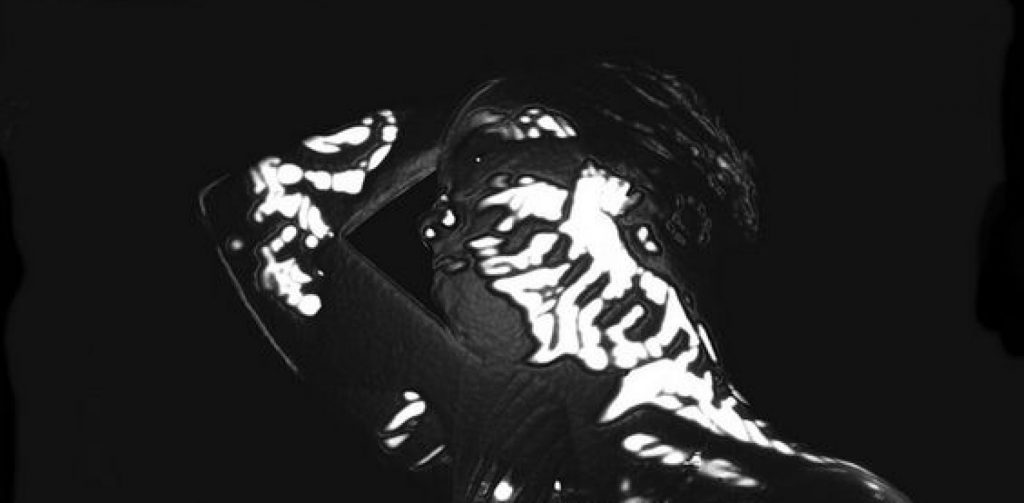To stimulate some ideas and experience installation works live in the flesh, I went to a few exhibitions around London. The first was this exhibition titled “Can You Hear Me?” by Indian artist Nalini Malani. Despite the fact that Malani is a visual artist, I found this installation very relevant for this current project. There were various large speakers laid across the floor in the open space, which projected uneasy synth tones and piano notes. These sounds provided the soundtrack to visceral animations that were stunningly beautiful with a sharp edge of explicit darkness. The freehand style of the drawings (that had been sequenced to create fast paced moving images) induced a sense of innocence around the cold themes of the images themselves.
Based largely around feminism, racial tension, violence and social inequality, Malani highlights the horror of the present moment through detailed images of mythical characters, quoted text and notation. These unmistakeably explicit depictions of the current state of the world often lean into a satirical tone, with the description of the installation on the Whitechapel Gallery website describing the work as “Moral outrage [combining] with a rollicking delight in satire and absurdity.”
VIDEO I TOOK –
https://drive.google.com/file/d/1sp43ETQLCOM5pcmkp_wK74HlwPGx5K82/view?usp=sharing

“THE ANIMATION CHAMBER CONTAINS THE VOICES IN MY HEAD AND MY HEART, SIMULATING HOW THE MIND WORKS, AS ORDERED CHAOS”
- This resembles a ‘stream of consciousness’, and I love how Malani has adapted this ‘scatter-brained’ concept directly into the style of her work.
I found a lot of inspiration through my experience viewing this, not just because of the dazzling visuals and encapsulating soundtrack, but also because of how well the space was used. Malani has done a fantastic job of filling up a very big open space, whilst at the same time leaving enough room for each projection to breathe. The angles that the images were projected at were slightly skewed, creating an air of discomfort which made the whole installation feel more organic and human. The images were an exaggerated and graffiti-like representation of issues we face in the current moment, but the composition in the space meant that you could examine one projection closely and feel consumed by the feeling it would emanate, and then you could stand in the middle of the room and experience the scale of all of the projections together, which offered me a totally different perspective on the work. I felt an increased sense of agency as a visitor, as if the work was a world I was free to explore. I liked this feeling and it is something that I would like to capture in my own work.

REFERENCES
Whitechapel Gallery. (2021). Nalini Malani: Can You Hear Me? – Whitechapel Gallery. [online] Available at: https://www.whitechapelgallery.org/exhibitions/nalini-malani-can-you-hear-me/ [Accessed 7 Jan. 2022].
Gallery, W. (2020). Nalini Malani: Can You Hear Me? YouTube. Available at: https://www.youtube.com/watch?v=-1iK-IQNFfw&t=202s&ab_channel=WhitechapelGallery [Accessed 7 Jan. 2022].
